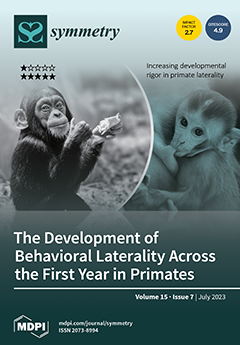We reconsider the semileptonic decays of
. The previous theoretical calculations predict a significantly smaller rate for the semileptonic decay of
B to
compared with that to the
, which is not consistent with the current experimental data. This conflict is known as the so-called ‘
vs.
puzzle’. In this work, we propose a simple scheme to fix this problem, where we suppose the strong eigenstates
that do not coincide with the eigenstate of the weak interaction, since no experimental results show that the weak and the strong interactions have to share the same eigenstates. Within the framework of this tentative scheme, meson
B first weakly decays to the weak eigenstates
and then the latter are detected as the
by the strong decay products
. We predict that there exist two new particles
with
, which were not previously identified. The good performance of the new scheme in describing the experimental data may hint at new symmetry in the weak decays of
to
heavy–light mesons. To test the scheme proposed here, we suggest an experiment to detect the difference in the invariant mass spectra of
that is reconstructed from the
B weak decay and from the strong decay products.
Full article





